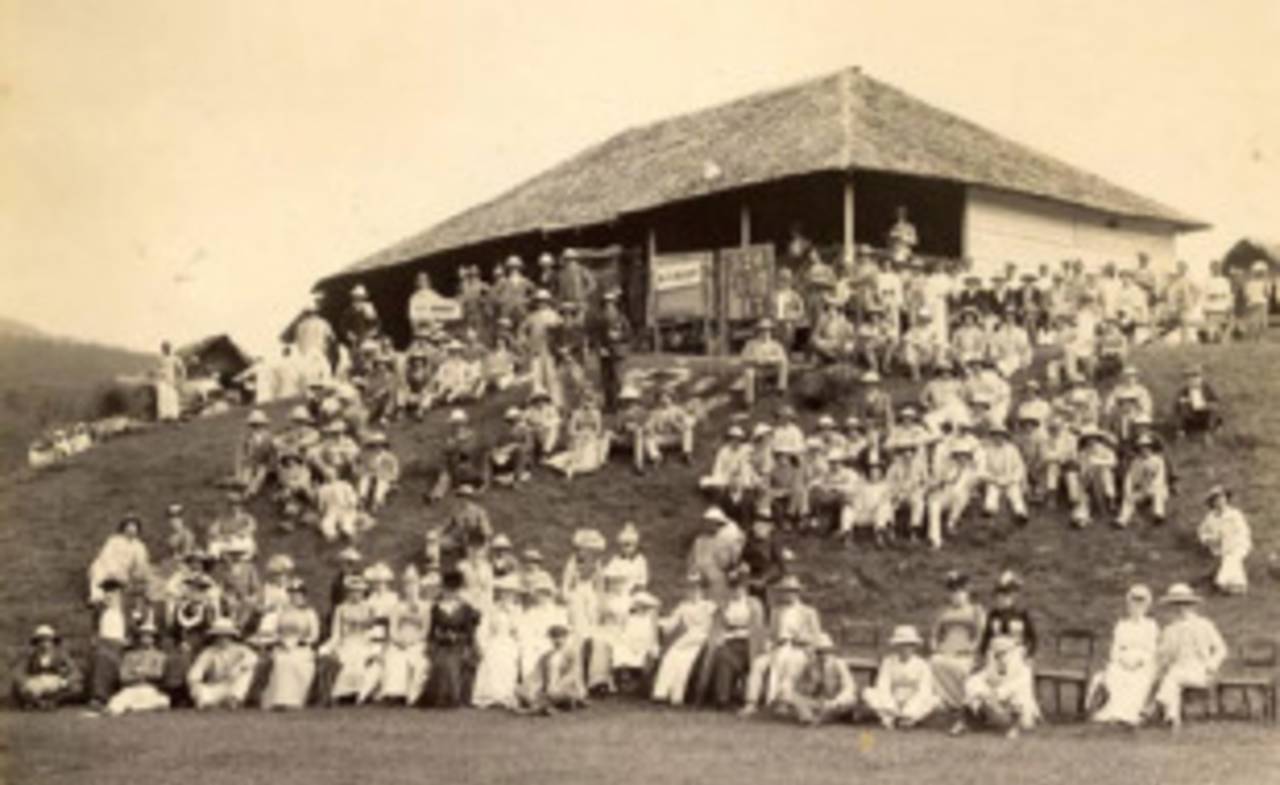The first All-India side
A look back at the first time an All-India side took to the field
Martin Williamson
27-Mar-2010

Lord Hawke's XI pose ahead of a match in Ceylon earlier in the tour • ESPNcricinfo Ltd
India's first appearance in a Test came, fittingly, at Lord's in the summer of 1932, when, given only one chance to show themselves on a long tour, they bloodied England's noses before eventually losing by 158 runs. That side was known as All-India, but it was almost 40 years before that that a representative side under that name first took to the field in a major match.
By the last decade of the 19th century cricket was thriving in India, and as the jewel in the crown of the Empire, it was inevitable that touring sides started to visit. The first, led by George Vernon, was in 1889-90, although it did not play any first-class games.
In 1892-93, Lord Hawke - at 32 not yet the dominating figure he was to become in the game - took a team of amateurs out to the subcontinent, a place he was familiar with, as three years earlier he had been in Vernon's side. After beginning their programme in Ceylon, Hawke's men travelled through India, and some 10 weeks after the tour had commenced, a three-day match against the XI of India was played in Allahabad, starting on January 26, 1893.
It was the fourth match now deemed first-class on the trip. The other three had all been in Bombay, two against the Parsees and the other against a Bombay Presidency side. Eleven of Hawke's squad had played first-class cricket in England and were no slouches, but the home players had stretched them, winning one match and only losing another by seven runs.
The All-India side contained only three genuinely ethnic representatives - Mehallasha Pavri, BD Gagrat, Nasarvanji Bapasola - with the rest being Englishmen stationed in the army or in India for business reasons. Pavri had taken 8 for 54 in the Parsees' victory in Bombay, Bapasola had bowled well in both matches, and both had toured England with the Parsees in 1888. The inclusion of Gagrat, who had not really done anything of note in either earlier match, was less obvious, although it is believed the three were nominated by their eminence grise, JM Framjee Patel.

Lord Hawke•ESPNcricinfo Ltd
The other eight were chosen and led by GM Chesney, editor of the local paper, Pioneer, and included three other players who went on to gain first-class experience in England. Walter Troup took over as Gloucestershire's captain in 1899, when WG Grace made his move to Crystal Palace, while Edward Sewell later played as a professional with Essex. Both men had been born in India, although neither could be considered Indian. The wicketkeeper, Edward French, appeared in 1902 for WG's London County team. Pavri had also played one Championship match for Middlesex in 1895; a doctor, he lived for a number of years in England.
Aside from Hawke himself and Vernon, two former Cambridge University students - FS Jackson and Arthur Hill - both become Test players in the next three years, while fast bowler Chris Heseltine (who years later was to be best man at Hawke's wedding) and wicketkeeper-batsman Charles Wright both played in the same England side in South Africa in 1895-96, again under Hawke.
The venue for the game - Allahabad - was rather surprising, given the other cricketing centres available, but it was probably more to do with geographical convenience that anything else. In his The Log of a Sportsman, Sewell wrote that the match was played "on a very dusty pitch in the Albert Park", but the actual name of the venue was Alfred Park (it is now known as the Madan Mohan Malaviya Stadium).
Hawke's side came into the game on the back of a ten-wicket win against Upper India on the same ground. Hawke who was down with a fever, missed that match and had not recovered in the time to lead his side against All-India, so Vernon took charge.
All-India, unlike the Parsees, were no match for Hawke's team. After winning the toss and making a promising start, the home side fell away. Troup made 49, but Bapasola, batting at No. 5, was left stranded on 17. Hawke's XI also struggled, limping to 51 for 3 at which point Hill was dropped. It was a costly error, as he went on to score 132, adding 142 for the fourth wicket with Arthur Gibson, who made 58. Vernon punished a tired attack for 50, and they finished the second day with 343, a lead of 204.
The Times noted that Bapasola ("Baby-soda", the Englishmen called him) "showed first-rate form in making 65 with free hitting", adding that the visitors' fielding was "rather loose and the bowling not altogether up to the mark". Once again, the tail fell away and All-India were bowled out for 199, five runs shy of avoiding an innings defeat.
That was All-India's first-ever appearance. The name did not figure again in a first-class match until a side from India visited England in 1911. Then Lord Hawke led Yorkshire against the tourists.
Is there an incident from the past you would like to know more about? E-mail us with your comments and suggestions.
Martin Williamson is executive editor of Cricinfo and managing editor of ESPN Digital Media in Europe, the Middle East and Africa